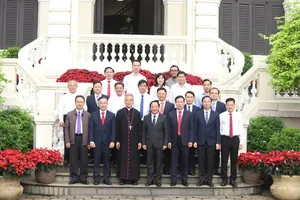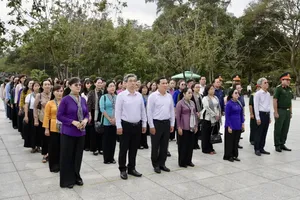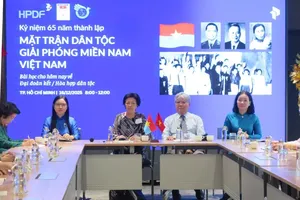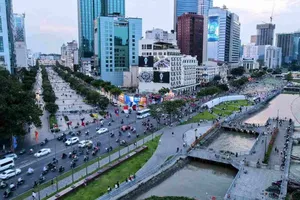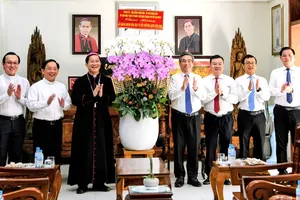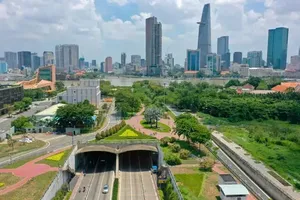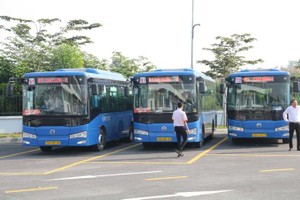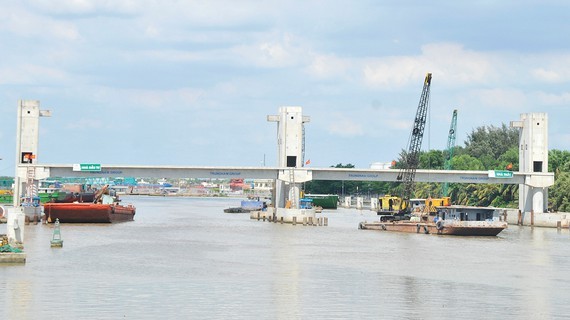
Compared to 2008 when 126 streets in the city were inundated, in this year rainy season, just 20 streets were flooded proving Ho Chi Minh City authorities’ successful efforts at flooding control.
For the period 2016-2020, HCMC authorities have carried out anti-flooding projects to help to reduce length and time of flood especially at hotspots of inundation for years.
Nguyen Huu Canh Street in downtown HCMC was less submerged under water after the HCMC government signed an agreement to hire a massive water pump system to prevent the street from floods especially the section in front of The Manor apartment building, said Ms. Bay, street vendor in the street.
According to vendor Bay, the section in Nguyen Huu Canh Bridge in Binh Thanh District is still submerged in water when it rained. However, from the house at 180 Nguyen Huu Canh Street to District 1, water went down soon after the rain stopped.
Regarding Nguyen Huu Canh Street’s still susceptibility to flooding whenever it rains, the city Department of Construction said that the street is sunk, it is lower than other streets; therefore it is susceptible to flooding whenever it rains.
In addition to massive pumps, an upgrade project of the street was kick- started and it is scheduled to finish in April, 2021 to tackle inundation thoroughly.
According to the Department, there were three torrential rains in the city and one of them was so heavy when the city received more than 112 millimeters of rainfall amongst the three rains which flooded the streets.
According to the Prime Minister’s decision 752 on HCMC’s overall plan of drainage, the drainage system is designed to receive 75.88 mm rainfall in three hours. Therefore, the last 112 mm rainfall has caused overload for the city’s drainage system.
Consequently, some streets including Nguyen Huu Canh, Dien Bien Phu, Ung Van Khiem in District Binh Thanh; Quoc Huong, Nguyen Van Huong in District 2; Phan Huy Ich, Pham Van Chieu, Le Duc Tho in District Go Vap; Pham Van Dong, To Ngoc Van, Kha Van Can in District Thu Duc; Nguyen Van Qua, Le Van Luong in District 12 and Ho Hoc Lam in District Binh Tan were submerged by 0.1 meter to 0.3 meter.
Notwithstanding, water will ebb within 15 minutes after it stopped raining, said director of the city's Infrastructure Management Center under the management of Department of Construction, Vu Van Diep.
According to the municipal People’s Committee, for years, the entire machinery of state has been mobilized to join hand in tackle flooding for the period 2016-2020 as per the resolution of the tenth city Party Congress.
City dwellers well responded to the anti-flood program by actively taking part in the campaign “City residents are determined not to throw waste in streets and into canals for a clean city” which initially produced positive results, said Director of the Department of Construction Le Hoa Binh.
Sharing more information of the government’ efforts at flooding control, Mr. Binh said that for the period 2016-2020, HCMC is determined to thoroughly settle inundation in downtown areas and parts of city with area of 550 square kilometers.
It is estimated that around 6,5 million residents will benefit from the anti-flooding program. Improvement of water environment, building more water reservoirs and urban renewal along with prevention of inundation.
City authorities planned to prevent flooding in streets Luong Dinh Cua, Nguyen Van Huong, the Hanoi Highway, Huynh Tan Phat, Le Van Luong , Tran Xuan Soan at the end of the year.
Director Binh mentioned challenges in anti-flooding mission including rapid urbanization, continued sunk land and climate change as HCMC is one of ten cities in the world under the highest impact of climate change. Hence, some parts of the city are still flooded. This requires move sustainable inundation management strategies.
From the beginning of the year, the Infrastructure Management Center has repaired and dredged drainage system particularly in flooded areas. Furthermore, the city is ready for operation of 1,077 anti-flood and tidal valves and 27 pumping stations with 58 fix pumps and mobile pumps.
Additionally, five tidal stream crossings or culvert comprising of Binh Trieu, Binh Loi, Rach Lang, Rach Nhay – Ruot Ngua, Nhieu Loc – Thi Nghe that conveys tidal flow below a traveled way, such as a road, pedestrian path, or railroad also contribute to high tide flooding prevention.
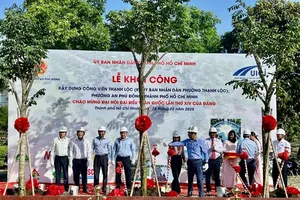

)

